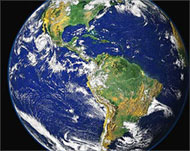NASA unveils penguins’ secret ‘oases’
Ever wonder how penguins survive in such extreme weather conditions?

NASA satellites have found “oases” in iceberg-rich lands of the Antarctic which show where penguins feast and thrive, researchers said on Tuesday.
These “oases” are actually warm patches in the normally ice-covered ocean along Antarctica’s coast. These warm areas help massive stretches of open water to support microscopic plants at the base of a food chain that ultimately feeds penguins as well as whales, seals and other animals.
Some of these stretches of open water, known as polynyas, are as big as mini-oceans themselves. At least one is the size of California – but because they are surrounded by ice, they are impossible to see by ship.
For this reason, satellite data was used to analyse the plant life in these areas, said Gert van Dijken of Stanford University.
“A lot of these polynyas have never been studied, you can’t see them from boats,” van Dijken said. “The only way to study them is by satellite.”
Satellite assistance
 |
|
Satellite images helped scientists |
“We used different kinds of satellites to look at the sea ice so we could see how much open water there was, and we used the ocean colour sensor, to look at the colour of the ocean.”
Using a special formula, researchers figured out that if the water was green, it was chock full of phytoplankton, the tiny plants that nourish minuscule shrimp-like creatures called krill.
Krill are on the menu for many larger Antarctic creatures, notably the Adelie penguins whose population thrives on some of these oases, van Dijken said.
Because there was plenty of krill to eat, the Adelie penguins could stay close by instead of going long distances to search for food, which would expose them to predators and other natural dangers, the scientists found.
The researchers used data from two satellites: NASA’s Sea-viewing Wide Field-of-view Sensor and the National Oceanic and Atmospheric Administration’s Advanced Very High Resolution Radiometer.
This research appeared in a recent edition of the Journal of Geophysical Research. More information and images are available online at: